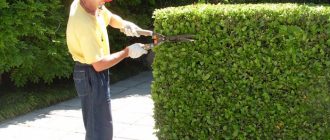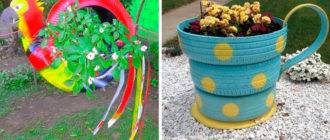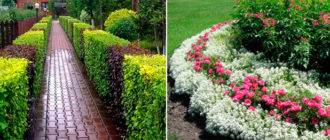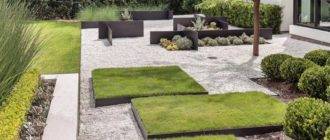Today, the owners of country houses and summer cottages equip their plots so boldly and creatively that it has become quite difficult to surprise anyone. Pools and fountains in the courtyard, exotic plants, flower beds and beds in the shape of the sun, hearts and butterflies are no longer impressive. Everyone strives to ennoble the territory around the house as much as possible, so that, in their free time from work and household routine, they can indulge in rest in a calm, pacifying atmosphere, and, of course, surprise friends, acquaintances and neighbors with the beauty of their possessions. For quite a long time, the culture and traditions of Japan began to come into fashion, namely, stone gardens.

Features of Japanese stone gardens
In Japan, only specially trained craftsmen are involved in the design and creation of a rock garden, since the idea is based on a very deep meaning. It consists not in pleasing the eye of the homeowner and causing a slight feeling of envy of the neighbor on the site, but in knowing the highest truths of the world through meditation.
In our country, the strict principles of arranging a stone garden are not so important and some deviations are allowed. Nevertheless, the main features must still be taken into account, otherwise it will not be a stone garden in the Japanese style.
Here are the most important points:
- Careful selection of stones, especially lonely boulders. They can be of any shape other than a ball or a cube. They should not have sharp corners, and chips and steps smoothed out by time and natural phenomena. It helps to deal with anger and aggression.
- Symmetry and clear lines are not allowed, they can deprive the garden decor of its natural naturalness.
- The background color must also be chosen wisely. Do not decorate it with bright plants and stones. All shades should be calm, the decor should be chosen tastefully, otherwise it will be rather difficult to relax in such a garden.
- Chaos in the rock garden should be avoided. Overpopulation with a variety of plants and extraneous elements can ruin everything. The plantings should not grow too close to each other, and it is better to completely remove the artificial decor.
- The structure of the stone should be strong and solid, and the material should inspire confidence and instill a sense of security and safety.
Arrangement of a Japanese rock garden
To bring the idea of an oriental garden to life, it is not necessary to have a huge territory on the site. You can do everything in a small remote corner. Plus, there are absolutely no soil requirements. The main thing is to think over everything in advance, and do the work gradually, and not chaotically.
So, the first step is to make a sketch on paper. It is advisable to draw a detailed diagram of the arrangement of stones, a fountain (if it is intended), plantings, benches and other decorations.
Stone is a rather heavy material and it is quite tedious to carry it from place to place without any plan.
The next step is to start the selection of stones. Their traditional number is 15 pieces. We are talking specifically about large, massive stones. If it is not possible to install exactly that many boulders, it is important at least not to allow an even number.
It is necessary to take into account not only the shape, size and angularity of the stones, but also the color range. They come in different shades, with different blotches, matte and glossy.
It is necessary to avoid catchy colors and maintain harmony and balance in everything.
Next, we start placing the stones. In classic Japanese style, they are installed in groups of 3 to form a versatile triangle. Of course, other placement is also allowed, but in one group it is not necessary to allow the same elements in height and shape.
The stones must be installed in a stable and reliable manner. It should not seem that they are about to fall, this brings anxiety.
An important point in the arrangement of the elements of the garden is the general direction.You need to choose the southeast or east, preferably in the shade, or at least not in direct sunlight, so that it is comfortable to be in the garden at any time of the day, and the stone is not red-hot.
There is another important principle: in a Japanese garden, there should be more horizontal stones than vertical ones. Thus, the balance of Yin and Yang - earth and sky is maintained.
Indeed, on any terrain, there are so many vertical elements, trees, buildings, etc.
After placing the stones, it is necessary to fill the space between them. The Japanese use fine gravel, gravel or light-colored sand. Thus, a feeling of cleanliness and freshness is created. However, if a lot of sunlight enters the garden, this can cause discomfort to the eyes, in which case you can cover the space with small pebbles of gray or brown shades. If the garden is in deep shade, then a white material is ideal.
Filling in the space between the cobblestones is only half the battle. Next, you need to apply the pattern with a special tool or with an ordinary rake with wide teeth.
The pattern should imitate water: straight lines mean calm waters, circular ones around the stones symbolize waves, and curves, like stormy streams breaking against cobblestones.
The next decorative element is tracks. Any material, natural or artificial, is used for them. These can be flat stones, slabs, or bricks. Asymmetry is also important here.
It is important that the paths are not level or intersect at right angles.
The lines of the paths must be made smooth, rounded. The material is dug into the ground so that the surface is comfortable for walking - even and as smooth as possible. If a person, while walking in the garden, constantly stumbles over the sharp corners of stones, it is unlikely that he will be able to come to peace of mind.
The arrangement of the stone garden is being completed by planting plants. Dwarf trees and shrubs with beautiful unusual leaves and crowns are ideal. It can be dwarf pine, fir, juniper or barberry and cotoneaster bushes. Herbaceous plants also do not hurt, but it is important to remember that everything should be selected in a uniform calm color scheme. Grass and bushes can very well mask defects or disadvantageous sides of stones.
It must be remembered that the main element of the garden is stone, so there should not be too much greenery.
In addition to the stages of arranging the oriental stone garden, which we have already described, additional decor can also be mentioned. They are optional, but they can complement the picture nicely. For example, this is an artificial reservoir with or without a fountain.
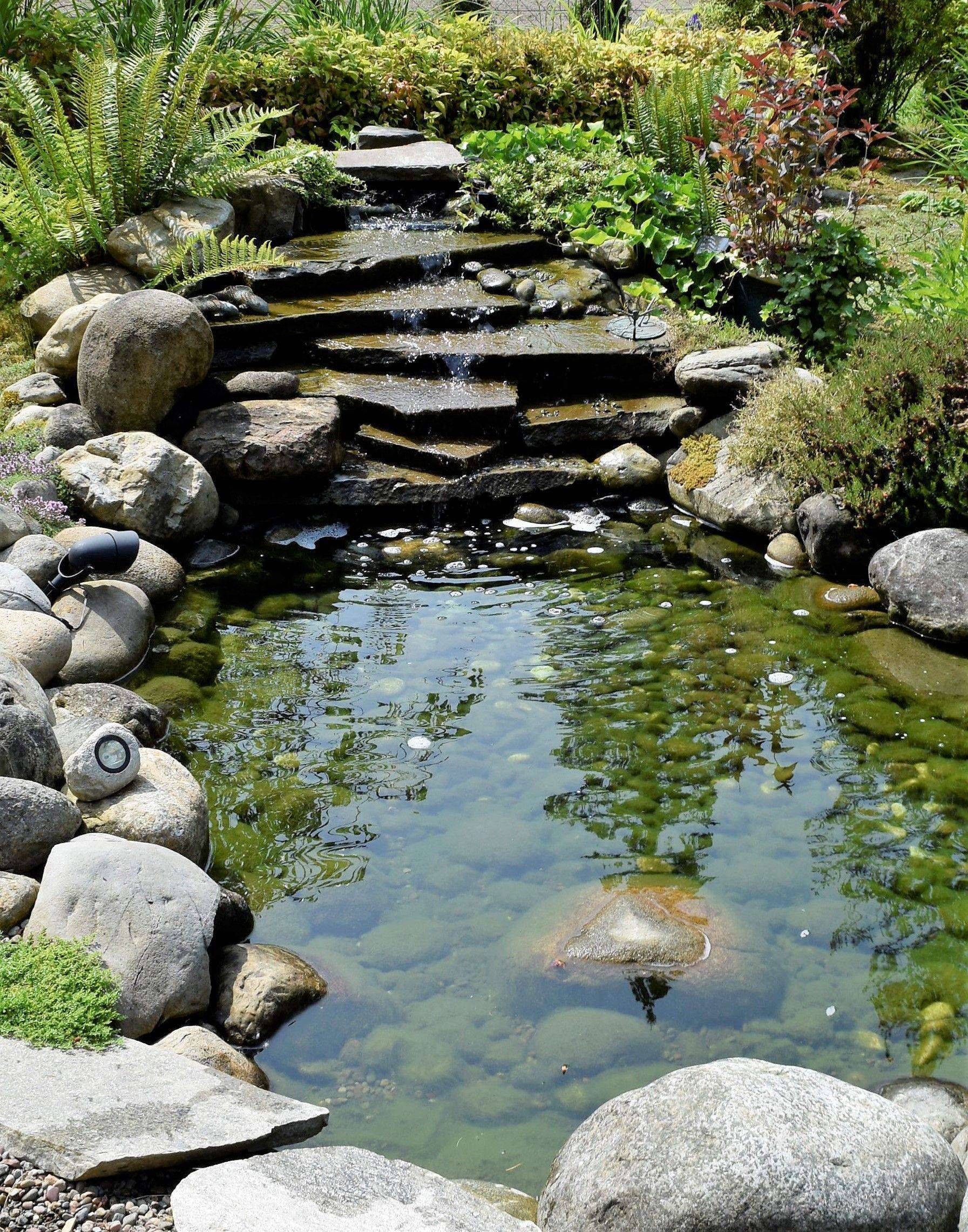
It will not take a lot of time and effort to arrange a home pond, at least it is not harder than placing cobblestones. It is necessary to dig a hole of the required diameter with a depth of at least 50 cm, then lay waterproofing on the tamped bottom, lay it out with stones and fill it with water. Plant plants and arrange decorations around the reservoir. Many people release fish or other animals into their home ponds. In addition to water bodies, you can decorate the garden with bridges, decorative lanterns, pottery or low fences, which will create a sense of privacy.
It turns out that admiring the stones can be much more enjoyable than it seems. The owner of a Japanese-style rock garden will have to spend enough effort to build and properly equip it, but as a reward he will receive a piece of paradise where you can arrange tea ceremonies, meditate, or just relax after a hard day's work indulging in thoughts of the eternal and beautiful.


